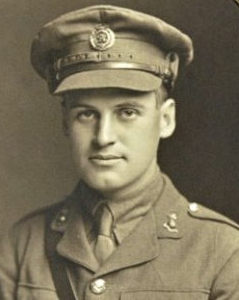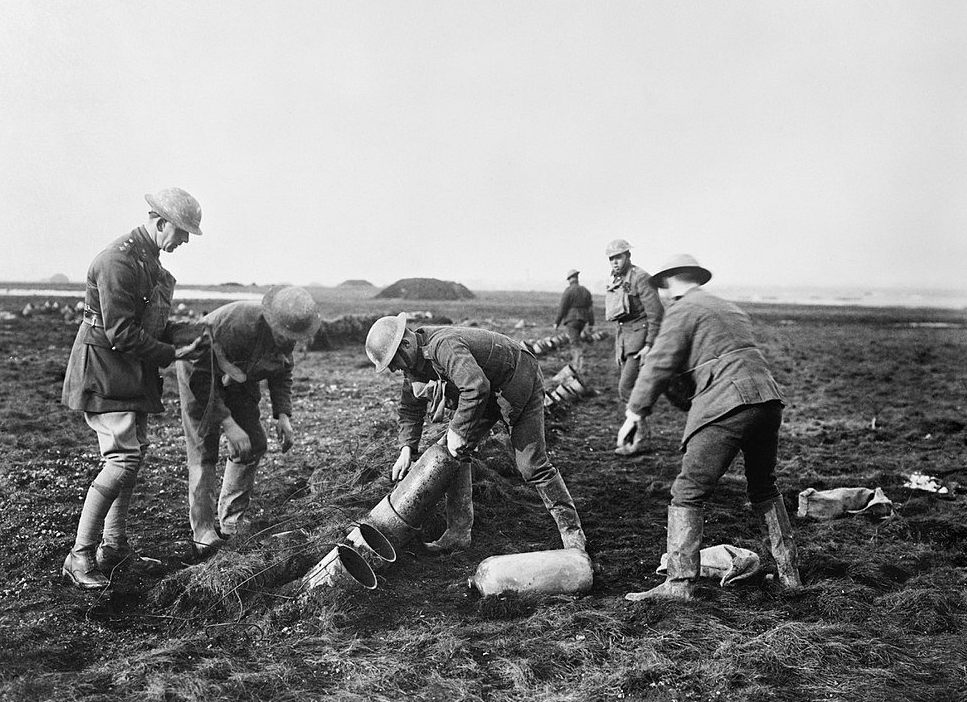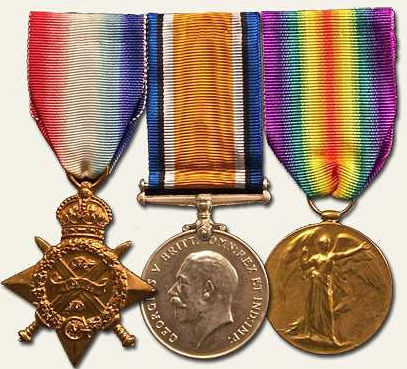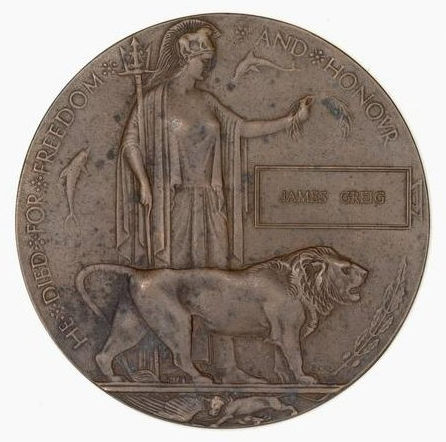
Figure 1. 2nd Lieutenant John Robertshaw Hill, R.E.
(Image courtesy of the Imperial War Museum)
2nd
Lieutenant
JOHN ROBERTSHAW HILL
(formerly 106320
Corporal)
Royal
Engineers
by
Lieutenant Colonel (Retired)
Edward De Santis, MSCE, P.E., MinstRE
(September 2023)

Figure
1. 2nd Lieutenant John Robertshaw Hill,
R.E.
(Image courtesy of the Imperial War Museum)
1. INTRODUCTION
“P” Special Company, Special Brigade, Royal Engineers
Son of Thomas R. and Sarah Jane Hill of 6, Birr Road, Heaton, Bradford, Yorkshire
FAITHFUL UNTO DEATH
Remembered with Honour
Family Information
John Robertshaw Hill was born in 1884 in Bradford, Yorkshire. His father was Thomas Rawson Hill (1854-1927) and Sarah Jane Hill (1854-1921), née Robertshaw. John was the fourth of their nine children, and their first son.[1]
Early Life In 1893 John entered Bradford Grammar School and studied there for the next nine years. In 1899 in the 5th Form Classical he came in near the bottom of the class in most subjects, but he was first in Natural Science. He moved into 6th Form Modern and his best results were in Physics, Geology and Chemistry. In 1900 John was a regular player in the First XV[2] as a “speedy centre” who was able to tackle well and pass to his wing man. In 1901 he captained the First XV team and also played for the First XI.[3]
In 1902 John obtained seven High Certificate passes, with distinction in Physics, and was elected to a Science Exhibition at St. John’s College, Cambridge. He graduated with Second Class Honours from Cambridge in June 1906 and he received a Bachelor of Arts degree with honours in chemistry. He remained at Cambridge after his graduation on a Hutchinson Research Studentship in Natural Sciences and took a position as an assistant demonstrator and research student.[4]
From 1908 to 1910 Hill was employed as an Assistant to Professor Sir Wyndham Rowland Dunstan[5] at the Imperial Institute in London,[6] then from 1910 to 1913 he was employed as a government chemist with the Federated Malay States in Kuala Lumpur, Malaysia. In 1913 he returned to England and carried out research at the Royal Institution[7] in connection with mangostin[8] and his research results were published in the Journal of Chemistry. In that same year he was elected a Fellow of the Institute of Chemistry.[9]
John Robertshaw Hill’s academic career may not have started off well. At first glance it looked like he was more into sports than he was into his studies, except for his apparent interest in the Natural Sciences. As he matured things changed and he became associated with the Imperial Institute, the Royal Institution and the Institute of Chemistry. His professional career was blooming just as the Great War began, and that war would put an end to that career.
3. ENLISTMENT AND COMMISSIONING
Enlistment
When the Great War broke out in August 1914, Hill felt an obligation to do his part in defending King and Country. He enlisted as 16/473 Private John Robertshaw Hill in the 16th Battalion West Yorkshire Regiment, a battalion known as the 1st Bradford Pals. At the time of his enlistment he was 31 years of age, 5 feet 7 inches tall and weighed less than 10 stone (140 pounds). He did not present the image of an infantry soldier.[10]
The 1st Bradford Pals was raised in Bradford in September 1914 by the Lord Mayor and City. After training locally they moved to Silkstone in December 1914. In May 1915 the battalion joined the 93rd Brigade, 31st Division and moved to South Camp, Ripon and later to Hurdcott Camp near Salisbury. On 20 July 1915 Hill left the battalion and was transferred to the Royal Engineers where he became 106320 Corporal J.R. Hill. His rapid promotion from Private to Corporal was the result of his degree in chemistry and the need for men with his academic credentials in the new unit of the Royal Engineers, the Special Brigade. This was the name given to the gas warfare unit of the British Army, a name used initially to hide its true mission. Many men with Hill’s credentials were enlisted or taken from other units and became, as Winston Churchill called them, “Corporal Chemists in spectacles.”
Corporal Hill was posted to “M” Special Company in the 3rd Battalion of the Special Brigade. The 3rd Battalion consisted of four companies, lettered J through M, with each company having six sections. The sections in “M” Special Company were numbered from 67 to 72.[11]
"M" Special Company was a cylinder company consisting of 7 officers, 12 non-commissioned officers and 206 other ranks for a total of 225 all ranks, broken down as follows:[12]
(1) Captain (Officer Commanding)
(1) Lieutenant (2nd-in-Command)
(5) Lieutenants or 2nd Lieutenants (Section Commanders)
(1) Company Sergeant Major
(11) Sergeants
(200) Other Ranks
(6) Drivers
Commissioning
On 27 July 1915 Corporal Hill went to France with his company. His academic credentials and his leadership abilities apparently impressed some senior officers in the Special Brigade, so on 30 April 1916 he was commissioned a Temporary 2nd Lieutenant in the Royal Engineers. His promotion required his transfer from “M” Special Company, so he was posted to “P” Special Company to serve as a Section Commander. “P” Special Company was in the 4th Battalion of the Special Brigade and it consisted of five sections numbered 71 through 75. Like “M” Special Company, “P” Special Company was a cylinder company that discharged various toxic and non-toxic gases from cylinders in the forward trenches when the weather and tactical situations called for a gas attack.[13]
4. POSTINGS AND CAMPAIGN SERVICE
“P” Special Company was operating under the control of Second Army headquarters during the Arras offensive in the spring of 1917. Up to this point the company had not been engaged in any major actions. On 6 May 1917[14] 2nd Lieutenant Hill was killed. There is some question as to whether he was considered to have been killed in action or accidentally killed. Some sources also indicate that he died on 7 May.[15] His obituary cited in the References below indicates that he was killed in a tragic accident near Vaulx, south of Arras, while preparing for an attack. Men from three Royal Engineers Special Companies and two divisional ammunition columns were moving into position 250 Livens Projectors, simple but effective mortars which fired containers of liquid gas. Despite safety precautions, a stray shell detonated a wagon carrying the propellant charges, which in turn attracted more German artillery fire. In the resulting conflagration forty-four men from the three Special Companies were killed, including Hill with twenty men from his ‘P’ Special Company.[16] What is uncertain about his death is whether he died as a result of the gas in the Livens shells or whether he was killed by the German artillery fire.

Figure
2. Royal Engineers Preparing Livens Mortars for Firing.
(Image
courtesy of Wikipedia)
Hill and all the men killed in this incident were buried in Beaulencourt Cemetery, near Bapaume.
In addition to 2nd Lieutenant Hill, the Commonwealth War Graves Commission lists the following men of “P” Special Company as having been killed on 6 May 1917:
214329 Pioneer R. Bell
147156 Corporal W.H. Finnimore
183922 Pioneer F.W.R. Brown
178920 Pioneer E. Cohen
214386 Pioneer Edward William Green
214503 Pioneer F. Hart
129891 Lance Corporal Samuel Jones
128268 Pioneer J. Lawes
129892 Pioneer Charles Wyndham Lewis
155380 Pioneer Haydn Gwion Morris
154182 Sapper Thomas Morris
167365 Pioneer William Vivian Oddy
167286 2nd Corporal R.W. Pike
106567 Corporal Edward Reilly
147040 Corporal Albert William Wall
192901 Pioneer A. Whetstone
188052 Pioneer David Whyte
138096 Pioneer J.R. Williams
147038 Sergeant Peter Webster
The following men died between 7 May and 10 May 1917, perhaps from injuries received from the detonation of the Livens mortar shells or from the German artillery:
130562 Pioneer R.T. Ellis (7 May 1917)
197486 Pioneer W.A. Stewart (7 May 1917)
214504 Pioneer John Henry Hope (9 May 1917)
214338 Pioneer D. Greig (10 May 1917)
5. MEDALS, AWARDS AND DECORATIONS
For his service during the Great War of 1914-1918, John Robertshaw Hill was awarded the 1914-15 Star, British War Medal and Victory Medal. The medals were sent to his father at 6 Birr Road in Heaton, Bradford, Yorkshire.

Figure
3. The 1914-15 Star, British War Medal and Victory Medal.
(Image
from the author’s collection)
In addition to these medals, Hill’s father would have received a bronze Memorial Plaque to commemorate his son’s death during the war. Cast in the plaque would have been John Robertshaw Hill’s name in the rectangle above the lion’s head. See Figure 4 below.

Figure
4. The Memorial Plaque.
(Image from the author’s
collection)
NOTE: The medals and the plaque shown above are not those of 2nd Lieutenant Hill. They are included here for illustrative purposes only.
Probate of Hill’s Will took place in London on 3 August 1917. His effects, amounting to £479, 11 shillings and 11 pence (about $39,000 US in 2023 currency) were left to his father, Thomas Rawson Hill.
REFERENCES:
Civil Documents
Probate Calendar, 1917, p.158.
Books
FOULKES, C.H. "Gas!" The Story of the Special Brigade. William Blackwood & Sons, Ltd., London, 1934.
RICHTER, D. CHEMICAL SOLDIERS: British Gas Warfare in World War One. Leo Cooper, London, 1994.
Family Trees
Ancestry.com: John Robertshaw Hill (by Andy Hill)
Internet Web Sites
Bradford Grammar School
https://www.bradfordgrammar.com
Commonwealth War Graves Commission
The Wartime Memories Project: 16th (1st Bradford) Battalion, West Yorkshire Regiment.
https://www.wartimememoriesproject.com/greatwar/allied/battalion.php?pid=5040
London Gazette
Supplement to the London Gazette, 29 May 1916, p. 5298.
Periodicals
Obituary: John Robertshaw Hill, Proceedings of the Institute of Chemistry, 1917, p. 23.
Battle Honours of the Royal Engineers. The Royal Engineers Journal. The Institution of Royal Engineers, Chatham, Kent, 1925-1928.
ENDNOTES:
[1] Obituary: John Robertshaw Hill.
[2] Rugby.
[3] Football.
[4] Obituary.
[5] Sir Wyndham Rowland Dunstan KCMG, FRS, FCS (1861-1949), was professor of chemistry and Director of the Imperial Institute in London.
[6] The Imperial Institute in London was set up in 1887 to encourage trade and links within the Empire. It was established at a time that the British were concerned to threats to their imperial dominance from rivals such as Germany, France, Russia and America. It would lobby for a move towards imperial preferences in a bid to justify the existence of a distinctive imperial economic policy. The building was located on Exhibition Row in South Kensington and was descended from the Colonial and Indian exhibition of 1886. The institute was renamed to the Commonwealth Institute in 1958 and changed locations. The remains of the original buildings now form part of Imperial College, London.
[7] The Royal Institution of Great Britain (or the Royal Institution) is an organization for scientific education and research, based in the City of Westminster. It was founded in 1799 by the leading British scientists of the age, including Henry Cavendish and its first president, George Finch. Its foundational principles were diffusing the knowledge of, and facilitating the general introduction of useful mechanical inventions and improvements, as well as enhancing the application of science to the common purposes of life (including through teaching, courses of philosophical lectures, and experiments).
[8] Mangostin is a natural xanthonoid, a type of organic compound isolated from various parts of the mangosteen tree (Garcinia mangostana). It is a yellow crystalline solid with a xanthone core structure. Mangostin and a variety of other xanthonoids from mangosteen have been investigated for biological properties including antioxidant, anti-bacterial, anti-inflammatory, and anticancer activities. In animal studies, mangostin has been found to be a central nervous system depressant which causes sedation, decreased motor activity, and ptosis.
[9] Obituary.
[10] Ibid.
[11] FOULKES, C.H.
[12] Ibid.
[13] Ibid.
[14] Commonwealth War Graves Commission Memorial.
[15] 1917 Probate Calendar.
[16] Obituary.